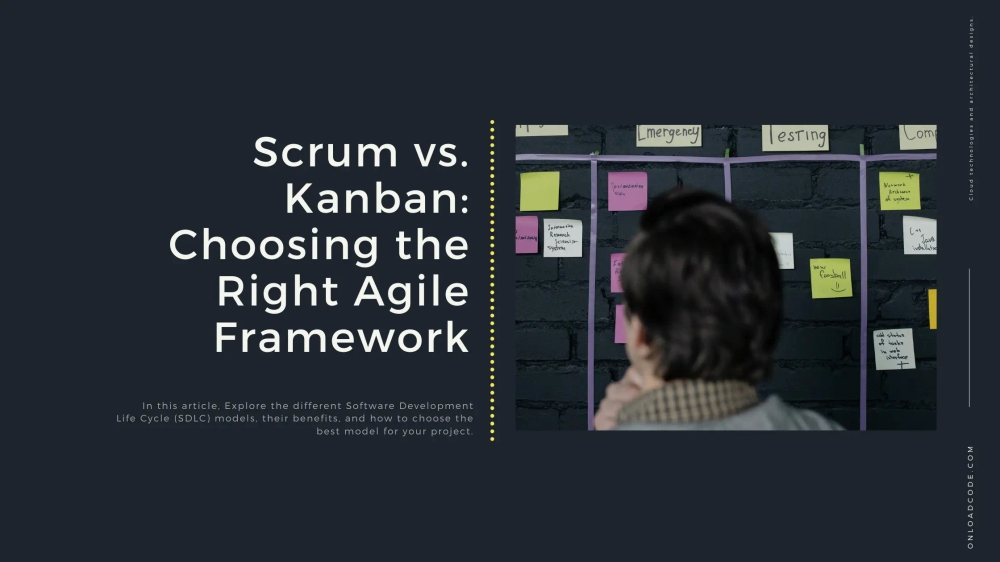Published
- 2 min read
Scrum vs. Kanban: Choosing the Right Agile Framework

Scrum vs. Kanban: Choosing the Right Agile Framework
Agile development offers multiple frameworks to improve project efficiency and collaboration. Among these, Scrum and Kanban are two of the most widely adopted approaches. This article explores their key differences, advantages, and when to use each.
What is Scrum?
Scrum is an iterative and incremental Agile framework that organizes work into time-boxed sprints, typically lasting 1-4 weeks. It emphasizes structured roles, ceremonies, and continuous improvement.
Key Features of Scrum:
- Roles: Product Owner, Scrum Master, Development Team
- Ceremonies: Daily Stand-ups, Sprint Planning, Sprint Review, Sprint Retrospective
- Artifacts: Product Backlog, Sprint Backlog, Burndown Chart
- Fixed Iterations: Defined sprint cycles with clear deliverables
Pros of Scrum:
✅ High accountability with defined roles
✅ Clear planning and predictable timelines
✅ Frequent feedback loops for continuous improvement
✅ Encourages teamwork and transparency
Cons of Scrum:
❌ Requires dedicated Scrum Master and structured teams
❌ Less flexible in mid-sprint scope changes
❌ Can be complex for small or dynamic projects
What is Kanban?
Kanban is a visual workflow management method that enables teams to track tasks using a Kanban board. It focuses on continuous delivery, flexibility, and limiting work in progress (WIP).
Key Features of Kanban:
- Kanban Board: Columns representing workflow stages (To Do, In Progress, Done)
- WIP Limits: Restricts the number of tasks in progress
- Continuous Flow: No fixed iterations, tasks move as needed
- Cycle Time Tracking: Measures how long a task takes to complete
Pros of Kanban:
✅ Highly flexible with no fixed sprint duration
✅ Easy to implement for teams of any size
✅ Reduces bottlenecks with WIP limits
✅ Provides real-time visibility into progress
Cons of Kanban:
❌ Lack of time-boxed iterations can make tracking deadlines harder
❌ May require disciplined teams to manage flow efficiently
❌ No predefined roles, leading to potential confusion
Scrum vs. Kanban: Key Differences
| Feature | Scrum | Kanban |
|---|---|---|
| Iterations | Fixed sprints (1-4 weeks) | Continuous workflow |
| Roles | Defined (PO, SM, Dev Team) | No predefined roles |
| Planning | Sprint Planning required | Work added as needed |
| Work Limits | No WIP limits, sprint-based | WIP limits per workflow stage |
| Best For | Complex projects needing structure | Ongoing, flexible workflows |
When to Use Scrum vs. Kanban?
- Use Scrum if: Your project has fixed deadlines, requires structured planning, and benefits from iterative progress.
- Use Kanban if: Your team needs continuous delivery, works on maintenance or support tasks, and requires flexibility.
Conclusion
Both Scrum and Kanban offer valuable benefits depending on your team’s workflow and project needs. Choosing the right framework ensures efficiency, adaptability, and continuous improvement.
Quiz Questions:
- What are the main differences between Scrum and Kanban?
- How does Scrum manage work compared to Kanban?
- What are the key roles in Scrum?
- Why might a team prefer Kanban over Scrum?
- What is the purpose of WIP limits in Kanban?
